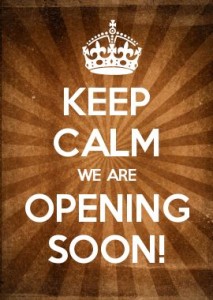
Image by decor8blog.com
Success in your business would mean it’s time to expand, but this feat does not come without it’s own set of challenges.
After interviewing 3 different owners for our Retail/ Restaurant Executive Series, I’ve learnt that they all faced similar challenges in management, as soon as they’ve reached their 3rd store opening.
Here are some of the problems and solutions used by our retail/ restaurant executives when managing multiple store locations.

Managing multiple locations means using technology to cut down on travel expenses
Implementing a different management system is necessary when you have several stores to oversee. Although it is not impossible, but it takes a lot of effort for you to constantly schedule your travel time to supervise different stores at different locations. Travel costs will pile up even more if your stores are located at different countries.
Getting your hands on free, cheap or available SaaS (software-as-a-service) solutions will be save your company a chunk of money. While some businesses have their own custom- built software platforms as collaborative platforms, some of the more commonly-used tools are available online and widely used by small business owners. Some of the best cost saving productivity tools are available online- free or at low monthly costs like Google Documents, Skype, PipelineDeals.com.
As mentioned by our retail executive Andrew Masigan, owner of The Advent Manila Hospitality Group in the Philippines, he advice that “the trick is to put the important systems in place… the efficiency your company’s chain-of-command largely determines
how well your stores operate”.
Managing multiple locations means having putting a system in place
“You must have systems in place to be able to standardize the quality of your communications, products and results,” says Bert Martinez, founder of Bert Martinez Communications. Ensuring a strong internal system of operations would mean that you can save costs on training and reduce time required for supervision. Each employee will have a clear understanding of their responsibilities and boundaries.
In our interview with Adrien Desbaillets, President at SaladStop, he says that “a strong infrastructure is required to support the operation. Overheads start to escalate and a strong focus on SOPs, training, technology is required.” The point here is then to make each employee’s responsibility crystal clear through an organised structure and combine that with a system that measures each person. That way, everyone is accountable for delivering their work regardless of which location they are based at.
Managing multiple locations means shifting from micro management to systematized macro management
Before, Eileen Grey– owner of The Picture Company in the Philippines, didn’t need to think about an entire infrastructure when she opened her first store. She recalls it being just “very personal and mom and pop” until her 3rd store opening. Now she has to consider personnel training, back office space, production, logistics and others.
Having systems and technology in place is good for the business, but it wouldn’t help much if there is no focus on communication. Establishing good communication practices within the whole business is key to collaborate with offices at different locations, co-workers and clients.
Good tips to foster good communication between offices at different locations can include using webcams during weekly team meetings or webinars so team members can see each other, establish a daily reporting system online and use a centralized task management software like Asana, Trello and others.
(Read on how PayrollHero stays in sync with our other offices across the globe)
PayrollHero can help you efficiently manage your multiple business locations and cut down on costs. Talk to us about our business or meet us at our next Meetup!

